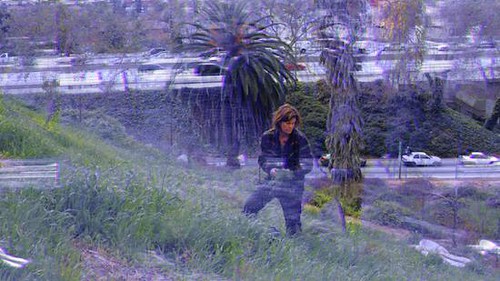
Nance Klehm, a horticulturist, educates students about the uses of plants and shrubs.
On the corner of Norris and 10th streets, an overgrown patch of earth is often overlooked by passersby. That was until Chicago-based horticulturist Nance Klehm visited. Klehm hosted “Philly Forage: An Equinox Tasting of the Landscape” at Tyler’s Temple Gallery on Sept. 21. Klehm came to Philadelphia to collect various urban plants as well as teach participants about the abundance of useful foliage located around the city. Klehm began the walking tour with an explanation of her modus operandi.
“Before I start to forage, I like to give a bit of an offering to the plant world,” Klehm said as she placed a small amount of artemisia, a plant, on the sidewalk across from the plot. She called for a moment of silence as she lit the plant, which released a sweet-smelling smoke.
Klehm began her educational walking tour by picking vegetation and explaining the names of the plants as well as its uses and history. Burdock and mullein are specific medicinal plants abundant throughout the city. Several times, Klehm would pop a leaf or a bit of a flower into her mouth and encourage the group to do the same, but she cautioned students that it should only be used or picked under close supervision of a skilled forager. Another usage of plants covered by Klehm was the utilitarian aspect of certain plants including the vibrant dye made of poisonous pokeweed berries and the jute plant, that’s strong fibers are useful for rope-making.
After the tour, participants sat down to a dinner prepared by Klehm herself. Ingredients were written on a blackboard for reference as well as the plants highlighted on the tour as they were key components in the dishes prepared. Any scraps from the meal were placed into a compost bin, which will be featured in Tyler’s Temple Gallery until it turns to soil. When it turns to soil it will be sent to Klehm in Chicago for her own compost collection.
Annora Dirsa, Temple Gallery student worker and sophomore speech therapy major, said that this is one of many fascinating displays to come at the Temple Gallery this fall. Installations of various artists’ works will be shown for a two to three week period at the Temple Gallery, which is open for viewing Wednesday through Saturday from 11 a.m. to 6 p.m.
Shannon Sweigart can be reached at shannon.sweigart@temple.edu.


Be the first to comment